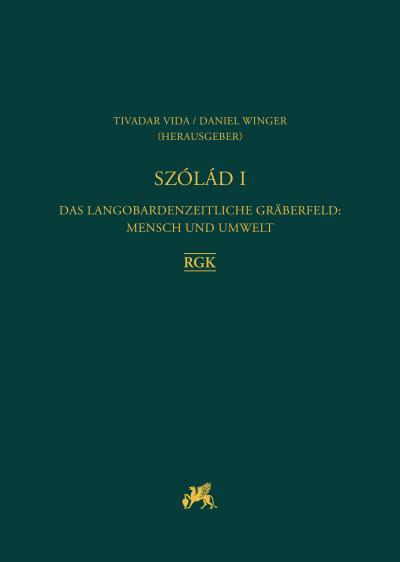Szólád I: Das langobardenzeitliche Gräberfeld: Mensch und Umwelt
https://doi.org/10.34780/cbmd-5udm
Synopsis
Volume 76 of the monograph series “Römisch-Germanische Forschungen” = Volume 7 of "Monumenta Germanorum Archaeologica Hungariae" (published 2022) presents research into a Lombard period burial site near Lake Balaton, with a particular focus on human-environmental relations. The volume presents joint investigations of the Szólád burial ground carried out by the Romano-Germanic Commission of the German Archaeological Institute (RGK) and the Archaeological Institute of the Hungarian Academy of Sciences from 2005 onwards.
Careful presentation and evaluation of data ranging from archaeological excavations through to all relevant scientific analyses makes this an essential contribution to the discussion of collective or ethnic identities: which historical actors were buried here? Do they represent historiographically attested groups – such as the gens of the Lombards known from literary sources? The dataset from Szólád forms part of the reference group for the large-scale international research project “HistoGenes”, a major element in the current discussion regarding the significance of aDNA analyses for Migration Period (4th–8th centuries) history and archaeology.
Szólád I contextualises the carefully documented features of the site within a wider framework of landscape-archaeological investigations as well as anthropological and archaeozoological analyses.
The village of Szólád is situated at the periphery of the southern bank of Lake Balaton. The volume lays out how the landscape presented itself to the arriving settlers in the 6th century and shows how human impact, despite fertile soils, gradually decreased in subsequent periods. In this, a key question is how the farming communities of the time practised agriculture, animal husbandry and fishing and used the natural habitat. The local loess-soils resulted in excellent preservation levels; wooden plates, for example, were documented and the eggs seemed to have rolled down only yesterday. The graves contained tools and equipment as grave goods, but also birds and fish and an entire horse. The bones of the deceased are equally well-preserved and allow for extensive archaeological study and analyses of both adults and children. In addition, the excellent state of preservation made it possible to reconstruct the burials themselves in great detail, providing insights into how death and the dead were dealt with by a small farming community at the transition from Late Antiquity to the early Middle Ages.
Keywords:
Langobarden, Ungarn, GräberfeldChapters
-
Zum Geleit
-
Vorwort
-
Bibliographie zum langobardenzeitlichen Gräberfeld Szólád
-
Der weite Blick der Ahnen – Lage, Ausgrabung und Umfeld des langobardenzeitlichen Gräberfeldes von Szólád, Komitat Somogy, Ungarn
-
Environmental history of an embayment of Lake Balaton near Szólád from the Late Glacial to the Migration Age
-
Analyse der Pflanzenreste einer Blockbergung aus Grab 13 von Szólád: Polsterung des Grabes – Rekonstruktion der Landschaft
-
Results of the archaeobotanical analysis of anthropogenic sediment samples from Szólád
-
Szólád – Ergebnisse der bodenkundlichen Untersuchungen 2007
-
Kartierung des Magnetfeldgradienten zur archäologischen Prospektion eines Gräberfeldes bei Szólád im März 2005 und im März 2007
-
Grabanlagen und Befunde in dem langobardenzeitlichen Gräberfeld von SzóládKatalog und Tafeln der Befunde von Szólád
-
Anthropologische Untersuchung der menschlichen Skelettreste aus dem langobardenzeitlichen Gräberfeld von SzóládAnthropologischer Katalog, Gräberfeld Szólád
-
Mammalian and bird remains from the Langobard period cemetery of Szólád
-
A horse skeleton from the Langobard period cemetery of Szólád: An archaeozoological study
-
Fish Remains from the Langobard Period Cemetery of Szólád
-
Ortsregister




